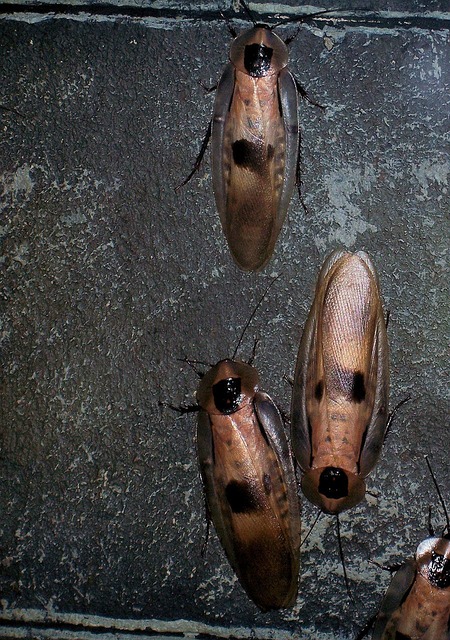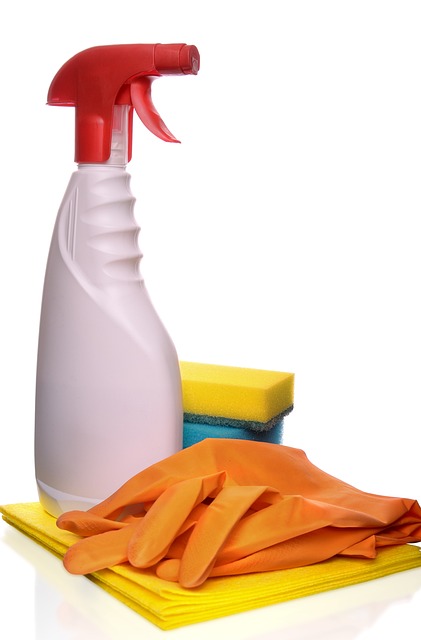
Are roaches taking over your Raleigh, North Carolina, space? It’s time to take action with smart roach baiting! Say goodbye to ineffective methods and hello to a strategy that hits roaches where it hurts.
Join us as we unveil the secrets of successful roach baiting and equip you with the tools to win the war against these resilient pests. Get ready to protect your Raleigh property!
Roach Baits You Need to Try
Here is a list of five roach baits you can use at home, plus detailed instructions to kick roaches to the curb. Happy baiting!

Boric Acid and Sugar Mixture:
- How It Works: Boric acid is an effective baiting option for roaches. Add a pinch of this powder to sugar, and insects won’t be able to say no! As they feast on your pest control concoction, the boric acid will disrupt their digestive system and eliminate them for good.
- Application: Mix equal parts of boric acid and sugar to create a paste. Place small amounts of the paste in areas where you’ve spotted roaches or around other hotspots like cracks, crevices, and corners.
Oatmeal and Baking Soda Bait:
- How It Works: You aren’t the only one who enjoys a hearty bowl of oatmeal in the morning! Mix baking soda with a bowl of prepared oatmeal to entice roaches and send them packing.
- Application: Mix equal parts of oatmeal and baking soda. Place the mixture in shallow dishes near roach-prone areas, ensuring it’s out of reach of pets and children.
Coffee Grounds and Water Paste:
- How It Works: With its strong aroma and tantalizing twang, roaches flock to coffee grounds for a taste. Mix your leftover coffee waste with water to form a sticky paste they’ll find irresistible. Large amounts of caffeine are toxic to roaches, but for a better measure, add in boric acid to ensure they’re entirely eliminated.
- Application: Mix coffee grounds with enough water to create a paste. Apply the paste in small dishes or disposable containers in areas where roaches are active.
Petroleum Jelly and Apple Peel Bait:
- How It Works: Roaches aren’t fans of petroleum jelly, often finding the scent unappealing. Use fruits to your advantage and place an apple on a surface coated with petroleum jelly. Once they touch the jelly-coated surface, you’ve caught them in your clutches and can dispose of them elsewhere.
- Application: Coat a piece of cardboard or a disposable container with a layer of petroleum jelly. Attach an apple peel to the surface. Place the trap in roach-prone areas.
Mashed Potato and Borax Balls:
- How It Works: Who doesn’t like potatoes? You can create bait balls using mashed potatoes and borax that roaches can’t resist. While effective, exercise caution when using borax and keep it far from other household inhabitants.
- Application: Mix mashed potato and a small amount of borax to form small balls. Place the bait balls in hidden areas where roaches are commonly found, ensuring they are out of reach of pets and children.
Regularly monitor the effectiveness of the baits and replace them as necessary. Plus, always take care of where you place these products, and never allow children or animals to consume toxic substances.
If the infestation persists or worsens, it may be time to seek professional pest control assistance, like the experts here at Innovative Pest Solutions!
Your Guide to Roach Baiting
Roach baiting really packs a punch in pest control strategies, especially when trying to find the source of an infestation.
With our roach-baiting techniques, you can turn things around and take back your space from these six-legged invaders. We’ll break it down step by step and give you all the tools you’ll need to stay safe against roaches!
Identify the Infestation Level
Before beginning, try to gauge the extent of the infestation. Raleigh, unfortunately, is no stranger to roach infestations.
Carefully look around your living spaces, closely examining areas where you’ve noticed roaches. If visible, count the number of cockroaches you spot and assess the frequency of their appearances.
Look in cracks and crevices to locate any hidden roach nests. These pests are sneaky and may hide away in hard-to-reach locations. Pantries, under fridges and ovens, and anywhere around your kitchen or bathroom are prime roach hideaways.
This initial assessment will give you an idea of the infestation level, allowing you to tailor your baiting strategy accordingly. Minor infestations may only require a few baiting stations, while severe numbers could require a robust approach.
Choose the Right Bait
But what’s the right bait to choose? Roach baiting isn’t rocket science!
Opt for a gel or bait station that contains a slow-acting poison, like many of the above-listed options. While fast-acting pesticides can get the job down quickly, they won’t impact hidden populations you can’t see in the open.
To knock out all of the pests, choose slow-acting baits that enable the poisoned roaches to return to their nests with the poison to ensure your bait spreads throughout the colony. This “secondary kill” effect is essential for targeting and eliminating hidden roaches.
Clean and Remove Food Sources
Before placing the bait stations, clean up around your home. While roaches can appear in even the cleanest houses, they’ll be difficult to eliminate if lingering crumbs or messes keep them fed.
Wipe up any visible food residue and dry up standing water to make your bait the hot commodity. Sweep, mop, and vacuum your living spaces meticulously, paying particular attention to the kitchen and dining areas. Store food in airtight containers, and fix leaky faucets to eliminate water sources that attract roaches.
Place Bait Stations
To maximize your bait’s impact, strategically place these stations in areas guaranteed to lure roaches in. Concentrate on areas with prominent roach activity, such as under sinks, near appliances, baseboards, and corners.
The idea is to position the bait stations in the paths roaches naturally traverse. Avoid putting them directly on top of sprays or pesticides, as these can repel roaches and hinder their interaction with the bait.
Don’t forget to be mindful of where you place these traps. Refrain from placing the products where pets could quickly lap up the poison or curious children could grab them. Always remember: safety first!
Maintain Distance from Cleaning Products
When roach baiting, position your bait stations away from places you frequently use pungent cleaning products. While regular cleaning is encouraged, these strong odors may deter roaches from approaching the bait.

Instead, Ensure the bait stations remain undisturbed, allowing roaches to discover and engage with the bait without interference. Consider using unscented cleansers in these areas and save the other products for places you want to keep cockroaches from accessing.
Don’t Spray Pesticides Near Bait
While unleashing a barrage of bug sprays might be tempting upon seeing roaches, resist the urge when baiting.
Pesticides can interfere with the effectiveness of the bait, repelling roaches and rendering the baiting process less impactful. Instead, focus solely on the baiting strategy to give it the best chance of success.
Observe and Monitor
Once the bait stations are in place, vigilant observation is crucial. Regularly check the bait stations for any signs of activity.
As roaches feed on the bait, they may decrease their activity around your living spaces. It’s also common to spot dead insects near or inside the bait stations – a positive indication that the bait is effective. Keep a record of your observations to track progress over time.
Replenish Bait
Roaches are persistent creatures and may return to the bait stations for nourishment. As the bait gets consumed or dries out, replenish it with fresh bait.
A steady supply of bait ensures that roaches continue to be exposed to the poison, helping the slow-acting mechanism to take its course. Regularly refreshing the bait enhances the chances of eliminating the entire roach colony.
Be Patient
Patience is the name of the game when it comes to roach baiting. This method is not an instant solution; it requires time for the poison to spread throughout the roach population.
Don’t expect an overnight transformation. It’s common to observe a reduction in roach activity over a period of several weeks as the bait takes effect.
Seal Entry Points
Thoroughly inspect your home for any possible entry points they may use to gain access. This includes carefully examining cracks, crevices, gaps around doors and windows, and any other openings that could serve as a potential entryway.
By sealing off these areas and preventing new roaches from entering your living space, you can increase the effectiveness of your baiting efforts and ultimately achieve long-lasting results.
Hygiene and Sanitation
As you progress with baiting, maintain a high standard of hygiene and sanitation. Continue eliminating food crumbs, grease, and water sources that attract roaches. Combining baiting and sanitation practices works synergistically to create an inhospitable environment for roaches.
Repeat as Needed
Roach baiting is not a one-and-done endeavor, especially for more extensive infestations. Depending on the severity of the situation, you might need to repeat the baiting process several times to ensure comprehensive control. Regularly inspect and refresh the bait stations, even after observing a decline in roach activity. Consistency is critical to achieving lasting results.
Contact Us For More Help!
Kick those pests to the curb with the pros at Innovative Pest Solutions! Tired of dealing with pesky cockroaches and other unwelcome guests? Roach baiting not working on its own? Look no further – we’ve got your back here in Raleigh, NC. At Innovative Pest Solutions, we’re all about zapping those pests and ensuring they don’t return for round two!
Your home’s happiness, your family’s well-being, and the environment’s health are what we’re all about. As the local go-to guys, we’re here to offer top-notch solutions that won’t break the bank. Want to learn more about how we can help? Contact us today for your next Raleigh, North Carolina, roach treatment!





